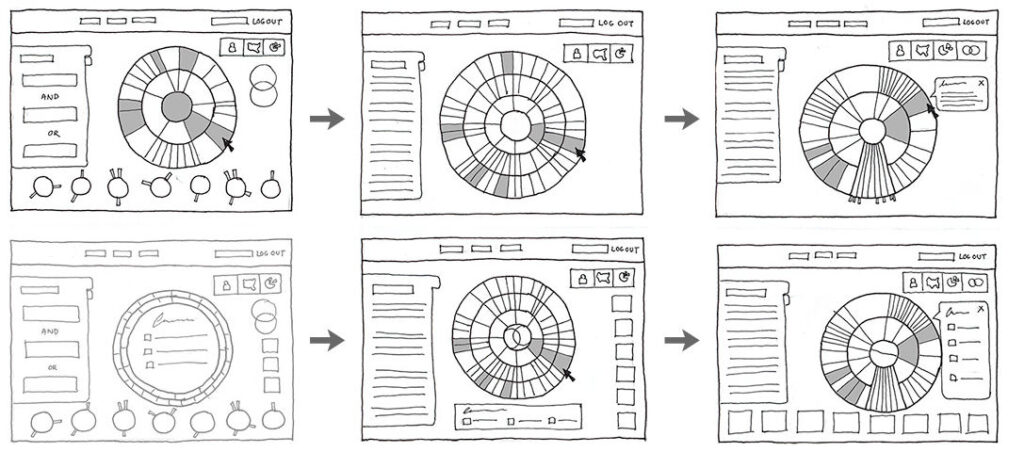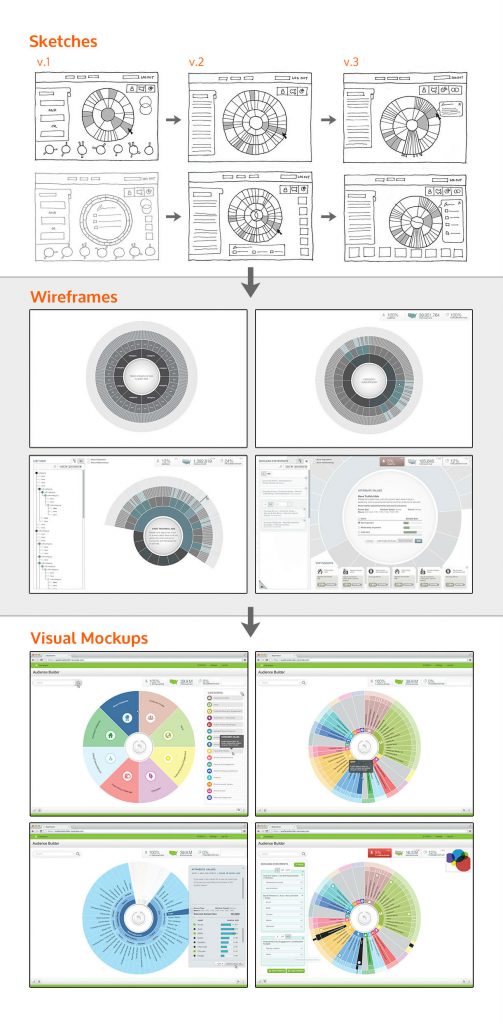
Sett the Context
The goal of this post is to explore the value in creating design concepts before the MVP (minimal viable product) is built. Depending on an organization’s overall product strategy, creating design concepts can provide the following benefits:
- Test use cases by visualizing the process first before it’s built. This helps validate the idea.
- Real widget in your hands. Instead of imagining it, having an actual concept to show, see, and play with, helps align vision amongst the stakeholders of the organization.
- Buy In. Ultimately you need support from the top and the bottom to see the product through launch. Showing a potential outcome helps garner support from the team for what might be a long build process.
- Save time and money. Creating a concept has a lower level of effort than creating an MVP and results can be seen quickly. The less time invested, the more money saved.
- Vendor Evaluation. If you need to outsource your product development needs, creating a low fidelity design concept is a great way to evaluate vendors prior to engaging in a longer-term engagement.
- Data validation. Know if the data is good enough to support the overall product by using real data. If the data can’t support the concept, then it won’t support the product.
The Process
- Step 1: Discovery – The importance of the Discovery step is to understand the data, the product vision, and focusing on what the concept requirements should be.
- Step 2: Ideation – Focused meetings on data analysis with active sketching/wireframing. The goal of this step is the quick formulation of concept layouts. This is a highly collaborative stage and requires stakeholder involvement. With the skeleton concept layout in place, it’s off to the next step to make the concept real.
- Step 3: Concept Creation – This is the most exciting step! Turning an idea into something that “looks” real is the end goal. In this step, the final concept is created as a low or high fidelity concept either as a static mockup or clickable prototype.
Options vary in what can be considered as a final concept. We usually like to classify concepts as either a “static” concept or a “dynamic” concept. Static is non-actionable, whereas dynamic incorporates the ability to click or is actionable.
Key Considerations when deciding between a static vs dynamic concept:
- Timeframe: how much time is available to create the concept? Generally, 4 weeks or less, static would be the best option. Anything beyond 4 weeks would allow for a dynamic concept to be created.
- Budget: Time = Money. The more focused and simple the concept needs to be, the faster and cheaper it usually is to build it.
- Audience: Is the audience internally more receptive to dynamic concepts or will static concepts be enough?
What You Need
Not every need is the same; however, here’s what you need to get started with concepts:
- The data is the focus point for the product, so it needs to be well sorted and accessible. Using tools such Tableau or DOMO will help gain better insights into the value of the data.
- Use Cases. What are the top problems you are trying to solve? Knowing how the data product will ultimately solve your top use cases will be key to validate if the investment will justify an ROI.
- Product Vision Statement. What’s the high-level vision of the product? Having a statement or executive summary on what the product will be will help provide context for the concepts that are created.
Schedule a Pre-MVP Demo Today
We would love to show you Pre-MVP in action and show you how you can validate your product idea and get it in front of your customer fast.

